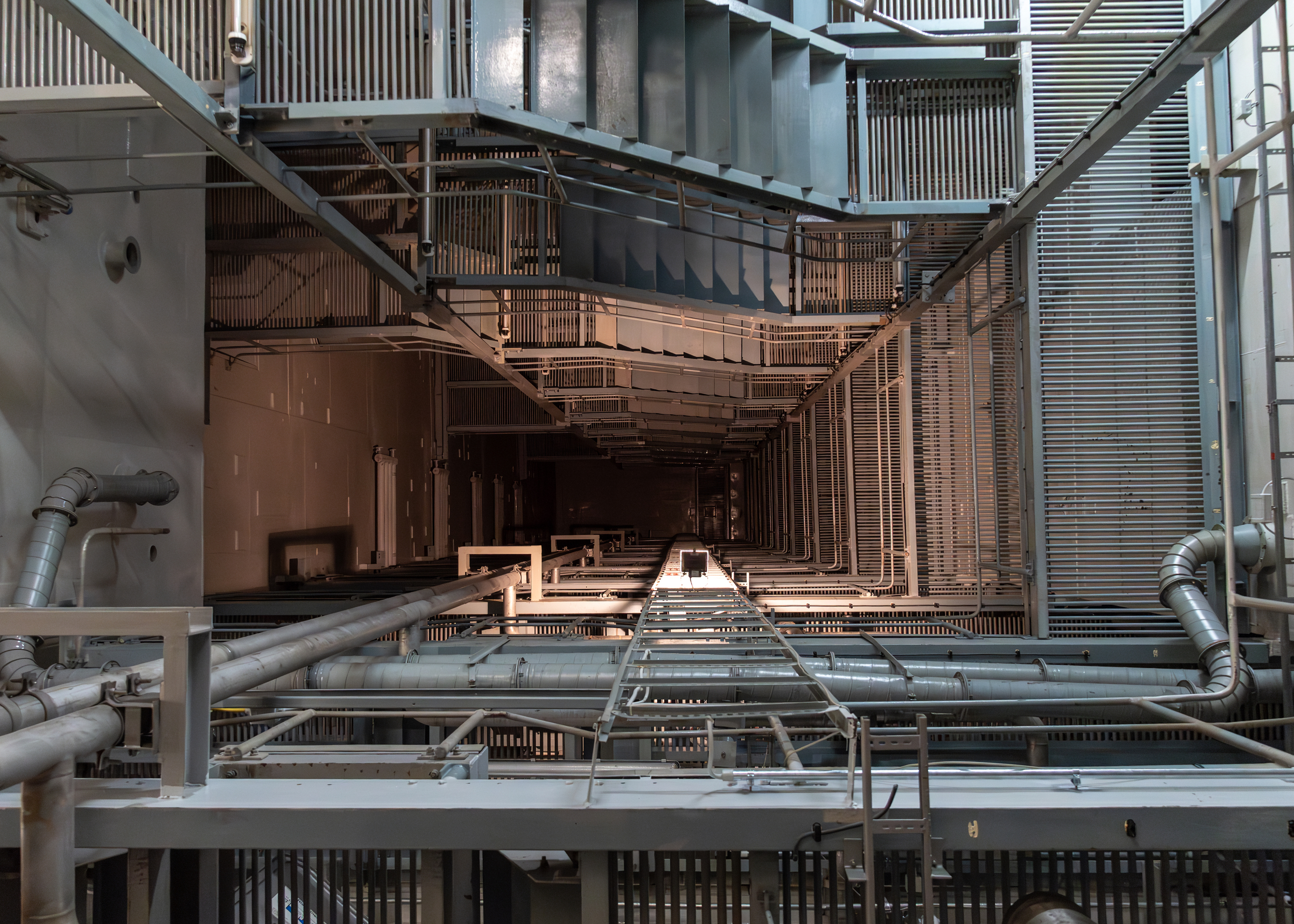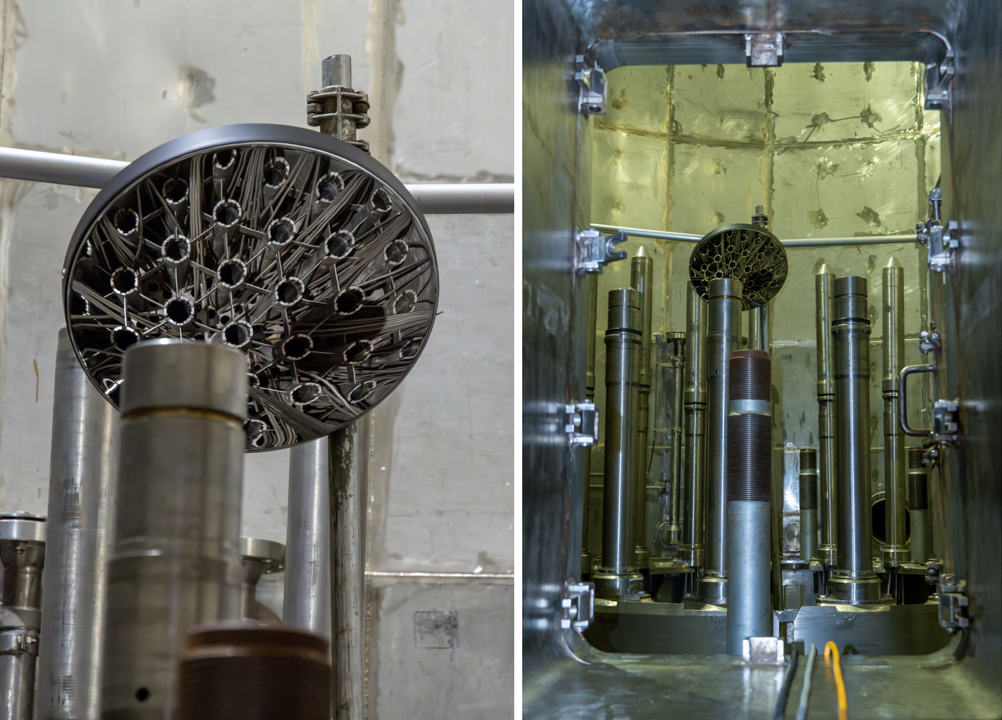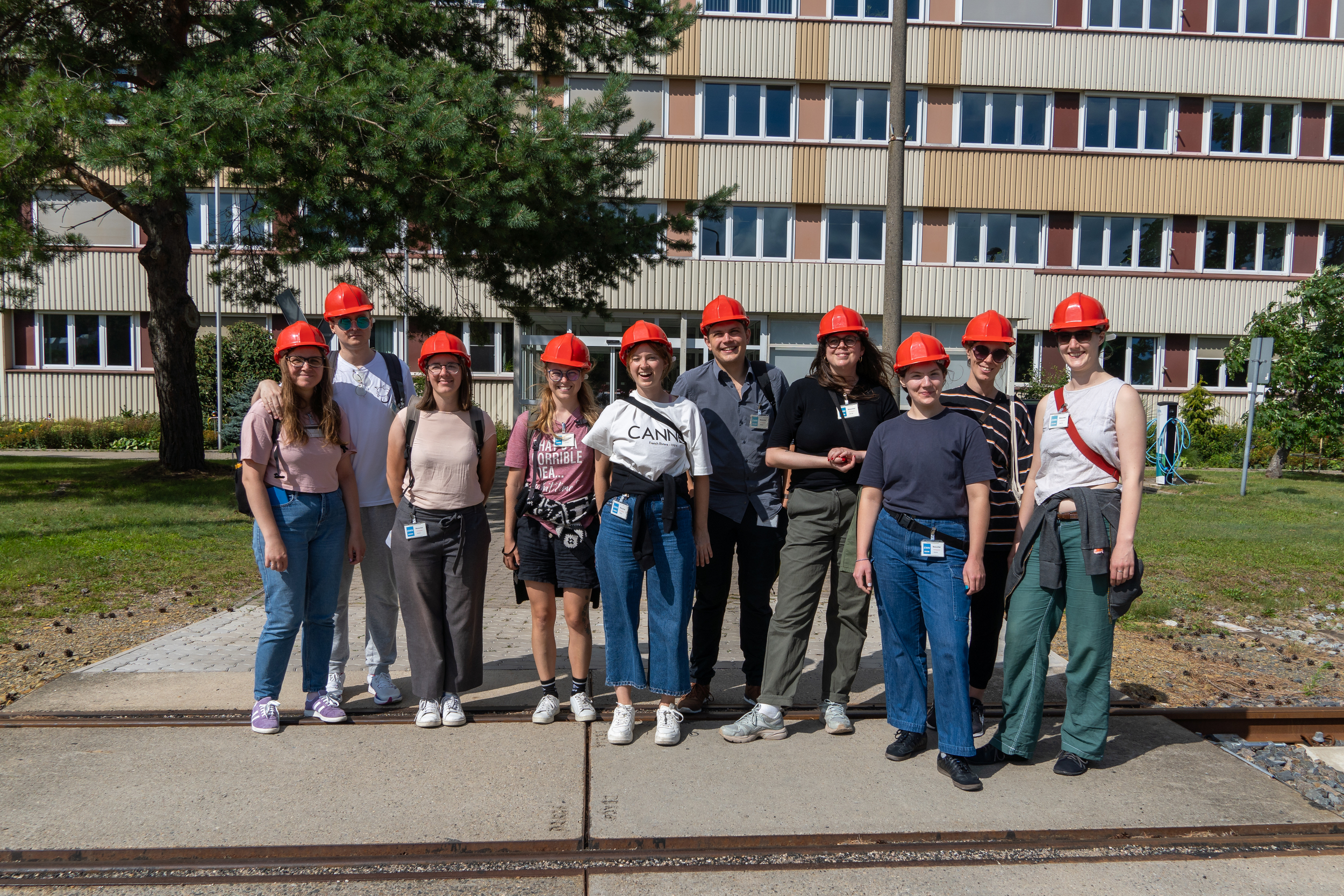Radio 80s80s is the only station you can actually listen to here,
– we are leaving the grocery shop’s parking lot, in the direction of Lubmin. Laura Branigan’s song “Self Control” is playing in the car.
I know this “that’s the only thing you can listen to here” quite well. May one be simply travelling from one place of nostalgia and retro-tunes to another? Never actually leaving. Certain places, as if caught between the times, unfold their temporalities differently to each visitor. To explore one such spot nearby, our group of doctoral researchers in Greifswald went to the Lubmin nuclear power plant (NPP).
This NPP is a place of historical and contemporary peripeties, a meeting point of different epochs. Our group is very grateful to the tour guide Luisa Behm, who not only confidently and easily took us, a bunch of humanities researchers, through the technical sides of the NPP, but also gave us a glimpse into the multifaceted history and different (self-)images of the plant. The Lubmin NPP was planned to be the largest in the world, and the construction project started in 1967. Units 1–4 were in operation from 1974 to 1990, while the remaining 5–8 were never connected to the grid. Upgrading to the new safety standards in the 1990s was not economically feasible, and a proposal to shut down and dismantle Lubmin NPP was made. At the time, four units were still active, the fifth was under test, and the other three had never been used. – Our group was in one of the latter, the sixth unit.
Decommissioning of units began in 1995. At the time, Lubmin NPP was one of the largest employers in the region: about 10,000 people worked there. The employees came from various countries of the socialist camp, and even today some of them give tours of the places of their past work. These days, Lubmin NPP still employs about 1,000 people.
EWN Entsorgungswerk für Nuklearanlagen GmbH is the company responsible for dismantling and disposing of the nuclear power plants in Greifswald/Lubmin (Mecklenburg-Western Pomerania) and Rheinsberg (Brandenburg). As a company that is fully owned by the federal government, the competencies of EWN include radiation protection, dismantling, decontamination, and interim storage. The company is also currently engaged in building up the KONRAD Coordination Office, which task is the final storage management for all radioactive waste which already exists and that which accumulates in the course of EWN dismantling activities. You may learn more about their activities here.
If, according to cognitive psychologist Jerome Bruner, throughout our lifetime we re-narrativize our lives, frame the experiences in a certain way to make sense of them and, not least, to make them more bearable, then the same thing can happen with large enterprises, where each of the employees carries a piece of its history as well. When a turning point happens and horizons of expectations shift, new stories have to be invented. Such peripeties, altering the usual course of things, happened at least twice in the last thirty years of the Lubmin NPP: with the reunification of Germany, and with Russia’s invasion of Ukraine.
Nuclear power plants built in the times of the FRG and the GDR found their different futures: those built in West Germany are now financed entirely privately, including the process of dismantling, while those in East Germany are financed by the Federal Ministry of Finance.
These days in Lubmin one might also see, or at least look in the direction of, gas pipelines Nord Stream 1 and 2, both inoperative at the time. The Russian invasion of Ukraine in 2022 and the energy supply uncertainty that followed made the German government focus on building liquefied natural gas (LNG) terminals to prevent a gas shortage in the country. The first LNG terminal was opened in Wilhelmshaven (Lower Saxony) in mid-December 2022. In the Lubmin area, the LNG terminal Deutsche Ostsee, operated by the private company Deutsche ReGas, functioned from January 2023 until April 2024. During the tour, the members of our group were particularly interested in the current and future plans for the NPP. According to current estimates, the planned deconstruction will extend at least over the 2030s, and possibly the 2060s – “A task for a generation”, we were told.



